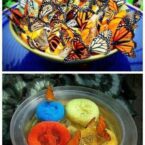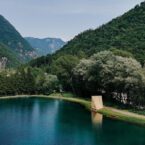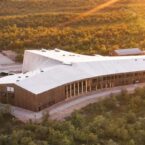
A postcard sent in 1903 has finally arrived at its intended destination in Swansea, 121 years after it was first mailed. Addressed to Miss Lydia Davis, the Christmas-themed postcard was delivered to the Swansea Building Society’s Cradock Street branch, the same address it was intended for over a century ago. The sender, identified only as Ewart, expressed his regrets to “L” about not being able to pick up an unspecified item, mentioned his pocket money, and sent love to mutual acquaintances. The postcard’s delayed delivery has sparked a quest to locate Lydia Davis’s descendants, with the building society staff taking to social media in hopes of connecting with anyone related to her.

The Royal Mail commented on the unusual delivery, suggesting that the postcard might have been reintroduced into the postal system recently rather than being lost for over a century. Henry Darby, the marketing and communications officer for Swansea Building Society, noted that the postcard arrived with regular mail and that despite efforts, finding Lydia’s relatives has been challenging. The only clue they have is that Lydia was 16 when the postcard was written, and her father was John F. Davis. The building society hopes that by sharing the story on social media, they might find someone locally who is connected to Lydia, possibly several generations later.

Fifteen-year-old Heman Bekele has been named TIME’s Kid of the Year 2024 for his groundbreaking work in developing a soap infused with immunotherapy drugs to fight skin cancer. This innovative solution stems from Bekele’s early observations of workers in Ethiopia, constantly exposed to the harsh sun, sparking his interest in protecting skin from UV radiation. Now living in Annandale, Virginia, Bekele was inspired by the lack of affordable skin cancer treatments, Continue reading “15-Year-Old Heman Bekele Named TIME’s Kid of the Year 2024 for Breakthrough Cancer-Curing Soap” »

In a remarkable twist of fate, a woman from the UK discovered that the costume ring she had casually worn for 30 years was a rare 26.2-carat diamond worth $382,000. The woman purchased the ring for a mere £10 (approximately $13) at a car boot sale in Isleworth, West London, during the late 1980s. For decades, she treated the ring as a simple piece of costume jewelry, unaware of its true value. However, in 2017, while cleaning Continue reading “Woman Discovers Her Garage Sale Ring Is Actually a $382K Diamond” »

Aging is a complex process affecting our bodies and minds in various ways. While we often think of aging as a gradual, continuous decline, new research suggests that this process occurs in distinct bursts, particularly around the ages of 44 and 60. The study, published in Nature Aging, challenges the common perception that each year brings a uniform amount of aging. Instead, researchers found that during certain periods, particularly in midlife and early senior years, our bodies undergo significant shifts. These changes can manifest physically, such as in the development of arthritis, graying hair, and cognitive slowdowns, as well as on a molecular level, where alterations in RNA and microbial populations reveal the body’s response to aging.

The study, which involved 108 participants aged 25 to 75, monitored various biological samples to identify changes in 135,000 different molecules and microbes. The findings indicate that around age 44, and again around age 60, the body experiences intensified aging processes. Initially, researchers speculated that the changes at age 44 were linked to perimenopause in women, but the data showed that men also undergo significant changes during this period. These aging bursts could be influenced by lifestyle changes that often occur in middle age or the body’s decreasing ability to metabolize certain substances, like alcohol, as it ages. The study’s findings highlight the importance of understanding these critical periods in aging, as they may help improve health outcomes and provide new insights into how we can better manage the aging process.

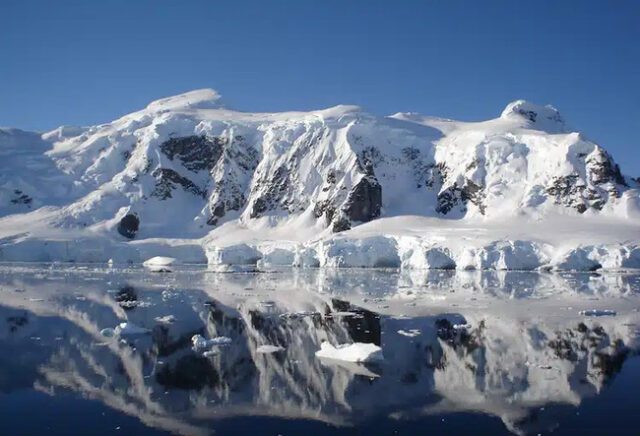
Antarctica is facing an alarming climatic anomaly, as temperatures have surged up to 50°F above average amid a persistent heat wave that began in mid-July. This near-record-breaking event is the second heat wave in the past two years, occurring despite the continent being in the heart of its winter—a time typically characterized by extreme cold and darkness. Eastern Antarctica, in particular, has been hit hard, with temperatures soaring to -22°F Continue reading “Antarctica Faces 50-Degree Temperature Increase Amid Persisting Heat Wave” »

Parrots are known for their intelligence and vocal abilities, but Apollo, a 4-year-old African grey parrot from Saint Petersburg, Florida, has taken it to an extraordinary level. Apollo broke the Guinness World Record for the most items identified by a parrot in three minutes by successfully naming 12 objects on December 18, 2023. This remarkable achievement earned him a place in the Guinness World Records 2025 book, highlighting his impressive cognitive abilities, which are said to be on par with a human toddler. Apollo’s identification of objects like “bugs,” “books,” and “socks” showcases his advanced understanding of the world around him, a skill that has been carefully nurtured by his human parents, Dalton and Victoria Mason. They adopted him in 2020 and have since dedicated themselves to training Apollo using the Model/Rival method developed by Dr. Irene Pepperberg, which has helped him develop a large vocabulary and sophisticated problem-solving skills.
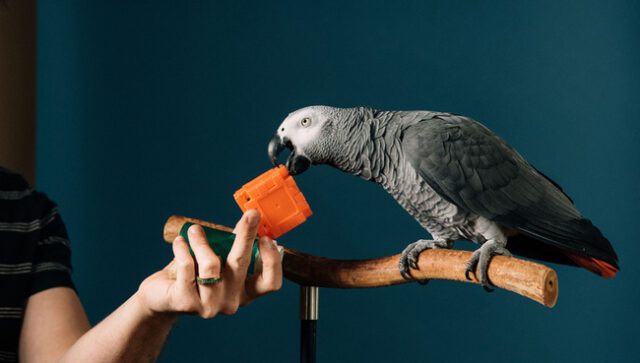
Beyond his training, Apollo enjoys a vibrant life filled with play and social interaction. He shares his home with two white-bellied caique sisters, Soleil and Ophelia, with whom he often plays. Apollo’s love for learning extends beyond his structured education, as he actively applies his knowledge in everyday activities, such as identifying his favorite toys, including a Super Mario figurine of the character Wario. His intelligence and playful personality have won him a significant following on social media, where fans are captivated by his charm and brilliance. Dalton and Victoria continue to nurture Apollo’s talents with the hope that he will one day be recognized as the smartest parrot ever. This goal seems well within reach given his incredible achievements so far.
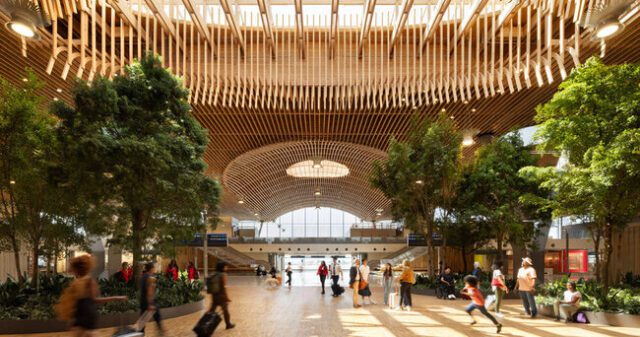
Portland International Airport (PDX) has opened its newly expanded main terminal, showcasing the world’s largest mass timber structure in an airport setting. The $2 billion renovation, designed by ZGF Architects, doubles the airport’s capacity, enabling it to handle up to 35 million passengers annually by 2045. This ambitious project highlights the Pacific Northwest’s natural beauty and timber industry, with a 9-acre mass timber roof that evokes the feeling of walking through a forest. Using locally sourced wood from small family-owned forests, non-profits, and tribal nations within a 300-mile radius underscores the project’s commitment to sustainability and community support. The innovative design not only enhances the airport’s functionality but also reflects Oregon’s tradition of forest product innovation.
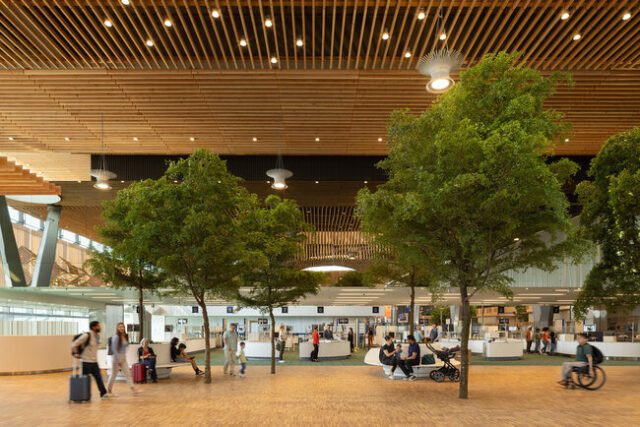
The terminal’s design prioritizes passenger comfort, integrating natural elements and biophilic principles to create a serene and welcoming environment. The mass timber roof, with its intricate lattice design and skylights, floods the terminal with natural light, reducing the need for artificial lighting and enhancing the space’s overall atmosphere. The terminal also features a reconfigured layout inspired by Portland’s walkable neighborhoods, ensuring a smooth and intuitive flow from check-in to boarding. The project, which significantly reduces embodied carbon and energy use, sets a new benchmark in sustainable airport design. As the first phase of a larger expansion, PDX’s new terminal not only meets current demands but also positions itself as a model for future airport developments worldwide.
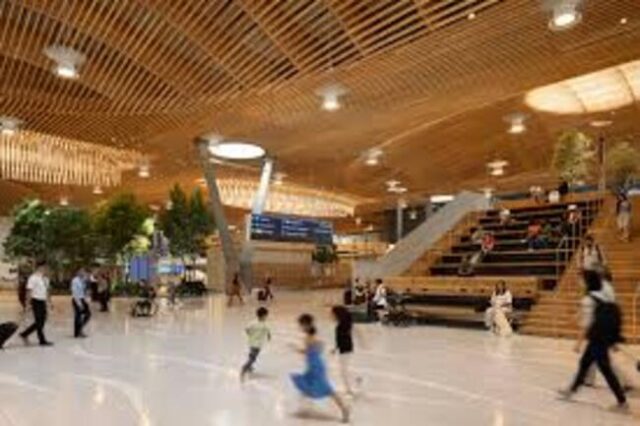
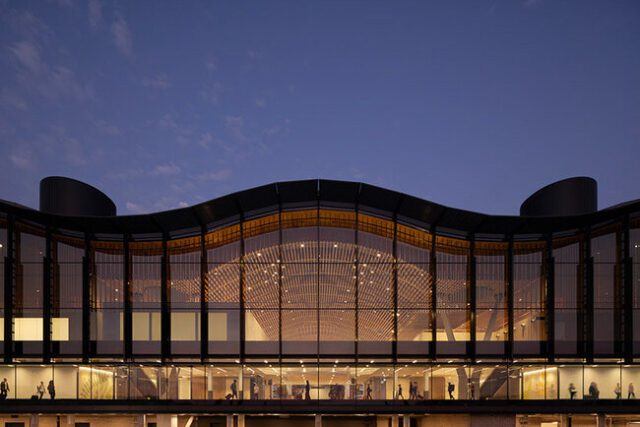
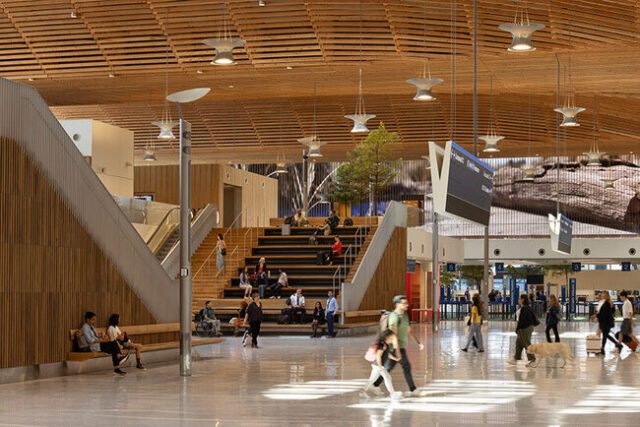

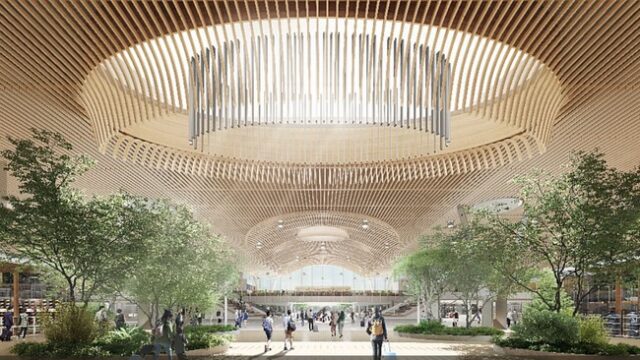


These shredded chicken and rice stuffed peppers are made in the crockpot (or slow cooker) and are an easy and fun meal when you carve your peppers for Halloween!
I found this recipe on Everyday Jenny and I’m sharing it with you… Continue reading “Halloween Stuffed Pepper” »

This blue French shell nail design exudes elegance and a touch of oceanic charm. The pearls lend a luxurious and sophisticated feel, while the gold accents add a hint of Continue reading “This blue French shell nail design exudes elegance and a touch of oceanic charm” »






























